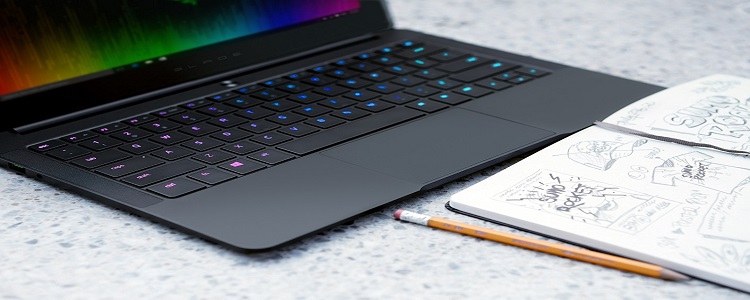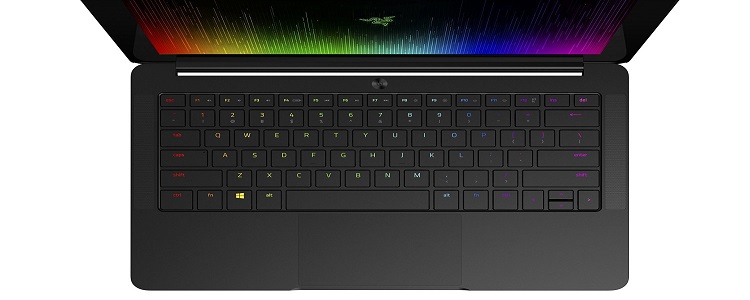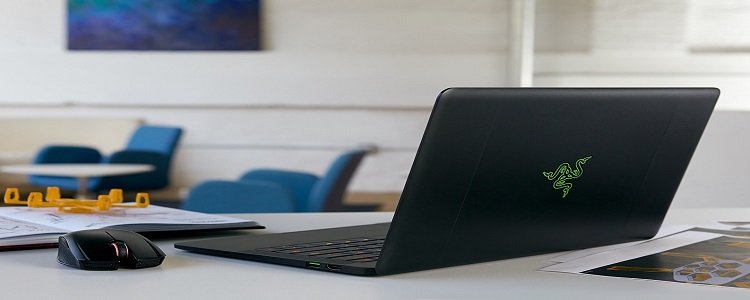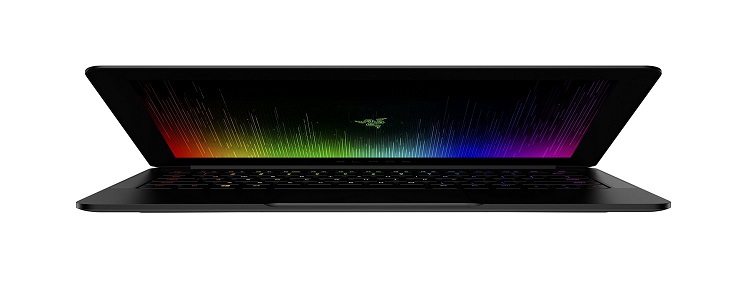The Razer Blade Stealth (QHD) affirms Razor’s foray in the midrange ultraportable category with a sharp Quad High-Definition (QHD) touch display and a premium, all-aluminum build. Its higher resolution brother, the Razer Blade Stealth boasts a 4K UHD display, a sleek, lightweight design and impressive performance, a rarely seen Razer Chroma Keyboard with per-key backlighting (up to 16.8 million color options) on a notebook.
As is, it wasn’t designed for serious gamers, but you can seamlessly fuse it to the Razer Core external graphics that is equipped with a desktop-class GPU via Thunderbolt 3. That way, you can be assured of a beefy gaming system at home, but you can still use it as a light, compact laptop on the road.
We’d have compared it with the 13-inch Apple MacBook Air, for its longer battery life, but its sub-1080p-resolution screen, mediocre port options, and middling performance make the Razer Blade Stealth our newest Editors’ Top Pick midrange ultraportable laptop.
Design and Features
The new model Stealth measures 0.52 by 12.6 by 8.1 inches (HWD) and weighs 2.9 pounds, which is slightly deeper than the competition; thought it’s a clever way to make room for a larger battery. It isn’t always the case of diminishing returns when you have a laptop this slim, but we recently reviewed the new Asus ZenBook 3 (0.47 by 11.65 by 7.53 inches, 1.97 pounds) which is way thinner.
The only difference between the 12.5-inch Stealth (QHD) and the Razer RZ09-01962E52-R3U1 is the screen resolution. Otherwise, they are similar in every way. The high resolutions bumps the 4K UHD Stealth into the high-end ultraportable category, while the Stealth (QHD) remains midrange, with a different set of competitors. Let’s face it, the lower 2,560-by-1,440 resolution screen isn’t quite splendid and bright as the 4K model’s 3,840-by-2,160 display, but its still impressive, and well thought for the 12.5-inch panel.

Again, the display is so far the most outstanding feature in this system. The QHD resolution is better than the MacBook Air’s 1,440-by-900 resolution, which is not even 1080p, that we’ve seen on some budget laptops. After all, the drop from 4K to QHD actually gives the Stealth a performance boost as its less demanding on the rest of the hardware, and to some extent contributes to longer battery life.
If asked, I don’t think that individual key backlighting is a must have, but I must say it looks awesome. In fact, it sets the laptop apart from the pack. Razer’s Synapse software and Chroma lighting technology allow you change the light effects and colors of individual keys, but you can tone it down if you don’t want anything flashy–though the feature helps if you hate other variations that have light bleeds through the keycaps. The Chroma keyboard is a definite plus.
As with the other Blade systems I’ve used previously, the keys are good quality, though they don’t have much travel, which may not appeal to some users. As for the touchpad, it is still the best: sturdy, nice, smooth and super-responsive. It comes with two speakers, one on either side of the keyboard, and they have potential to get loud for such a tiny system.

Slim laptops are good, but they tend to be mean on port. The Razer Stealth isn’t as thin as the new ZenBook 3 and Apple MacBook Air, but include USB-C as consolation. On the left, there’s the USB-C charging port with Thunderbolt 3, a USB 3.0 port, and the headphone jack.
On the right, there’s another USB 3.0 port and an HDMI port. It’s not a large suite of port options, and the same group as on the original Stealth, but the essentials are there. Also included are dual-band 802.11ac Wi-Fi, Bluetooth 4.1, a TPM security chip, and a 2-megapixel webcam.
For storage, our review model has a 512GB configuration, although you have a 256GB and 128GB options, both with the QHD screen. Alternatively, you can order a 4K model with a 512GB or 1TB SSD. Changing the storage model alters the laptop’s price fairly significantly, so it’s up to you to decide how important that is—the 1TB maximum limit is new compared with the previous Stealth.
Performance
The Kaby Lake generation, is perhaps, the main upgrade in this Stealth; which is the same a 2.7GHz Core i7-7500U CPU across the new configuration, the resolution and storage notwithstanding. To that, add 16GB of memory and you have a powerful system, capable of multitasking without stuttering. It is a perfect candidate for general productivity, though its performs falls slightly behind the Spectre 13 and new ZenBook 3, though the differences are barely noticeable. T
he discrepancy in performance maybe surprising, given the Stealth’s faster processor, but we tested it on higher demands targeting the QHD resolution compared with 1080p on the other competing two systems–realistically, there isn’t much of a difference in day-to-day use. That said, the Stealth (QHD) still suffices as an all-around fast performer for work and media projects, even with its small size and QHD display.

For the longest time, I have never tested an ultraportable system with gaming chops, regardless of price tier or processor. The Stealth is cut from the same cloth: No dedicated graphics card, rather, you have an Intel HD Graphics 620. The integrated graphics card doesn’t add up for any serious gaming, since the much you are getting in most games is nothing more than 30 frames per second. For instance, we only managed 27 FPS (low settings), though you are safe playing browser games, Minecraft and WoW on the vivid QHD screen.
That said, the Stealth (QHD) still suffices as an all-around fast performer for work and media projects, even with its small size and QHD display. You can get away with playing simple games, and maybe some less-strenuous titles on low settings, but don’t expect to do heavy gaming on this system, despite the Razer name.
However, if you must play on the Stealth (QHD), you can purchase the Razer Core external graphics card enclosure that is designed to fuse with thin Razer laptops, thereby allowing them access to powerful desktop graphics processing. It is bough separately, and uses USB-C port, which further shrinks the available connectivity, but it’s a great entry into the world of gaming.

Finally, the extra room added in the back of the system means good things for battery life, when combined with the more power-efficient processor. The Stealth lasted 9 hours, 27 minutes, on our rundown test, a nearly 2-hour improvement over the previous Stealth (7:36). The QHD resolution definitely plays a part in draining power, though, since the ZenBook 3 lasted 12:07 and the MacBook Air 13-inch ran for 17:36 on the same test, but 9 hours is still a good time, and more than we saw from the Spectre 13 (8:36).
Verdict
The new Razer Blade Stealth (RZ09-01962E12-R3U1) is stylishly designed, thin, and has been made faster than before, with an equally longer battery to boot. It strikes as an all-round upgrade of the previous model, and it presents a variety of configurations to choose from; that’s if you fancy a ton of storage and a 4K display.
If you want to treat yourself to something that’s thinner and more elegant, the new Asus ZenBook 3 is equally sleek and equally powerful as the Stealth, though it has a lower resolution and lacks the ‘fun’ additions. Safe for the sleek look, the new Razer Blade Stealth boasts of fast performance, adds a USB-C port with Thunderbolt 3, and higher-than-average resolution. For all these reasons, it’s our newest Editors’ Top Pick for midrange ultraportable laptops.
